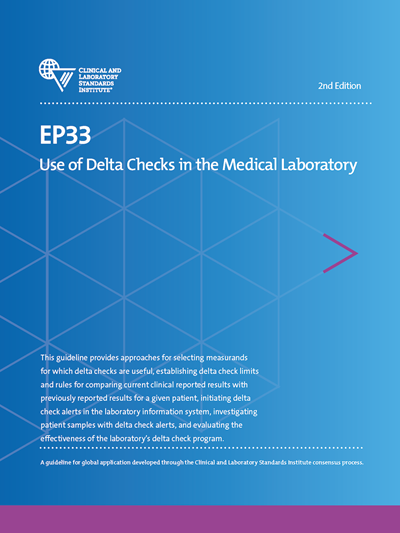CLSI EP33
Use of Delta Checks in the Medical Laboratory, 2nd Edition
Member price:
List Price:Details
Chairholder: Rex Astles, PhD, FAACC, DABCC
Date of Publication: July 6, 2023
Order Code PDF: CLSI EP33Ed2E
ISBN Number: 978-1-68440-193-2
Order Code Print: print not available
Edition: Second
Pages: 70
CLSI EP33 Additional Details
A guideline for global application developed through the Clinical and Laboratory Standards Institute consensus process.
If interested in ordering larger quantities of this document in print, please contact us here.

